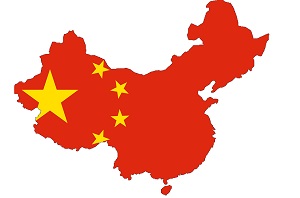The Chinese ecommerce experience is very different to Western standards, with China achieving exceptionally high performance on the digital side, according to a new report.

The study, from customer engagement specialists Contactlab and investment company Exane BNP Paribas measures how European luxury brands market online to the Chinese Consumer
Although Chinese brands are performing well digitally, they are lagging on the brick-and-mortar side, highlighting the importance of bridging the gap between the offline and online experience for customers. Messaging apps like WeChat, the Chinese most advanced version of WhatsApp, is being utilised to personalise engagement throughout a customer’s shopping journey.
The Online Purchase Process was recently tested in China. It included 65 parameters, both online and in-store and WeChat, across 3 global luxury brands, 4 E-tailers, 1 Department Store. The metrics focused on communication in regards to ordering, purchasing, packaging, return procedure, and return communication.
The report also found that authenticity is greatly desired by the consumer in the Chinese ecommerce landscape, in order to ensure customer faith and brand loyalty. The majority of Chinese e-tailers are now disclosing “Made in” on their product pages, but surprisingly Armani, Montblanc, and Chanel have failed to comply. In addition to this, research shows that a Burberry cardholder purchased via JD.com and Yintai.com was missing the embossed “Made in” label, and on Yintai the “Burberry” logo was missing too, thus jeopardising the authenticity itself.
European operators give preference to contacting customers in a more traditional way, such as via email, but Chinese operators favour mobile contact points. For example Chinese customers expect online chat assistance, product and service reviews, standard delivery in 1-2 days, and a full spectrum of payment methods, such as Alipay, WeChat pay, ’cash on delivery’, and Installment payments. The study highlighted that, apart from Alipay, the majority of European Luxury Brands and European Etailer, Mr Porter are late to adapt to this Chinese ecommerce environment.
The report also shows how “easiness of returns” and “quick buy option” could be a plus to be exploited by European brands. In Europe and the US, it is very important for brands to offer the “gift option” while on opposite in China, Alipay and WeChat give high relevance to the “pay by someone else option”!
Massimo Fubini, CEO of Contactlab, comments: “Our previous Who buys where: Decrypting cross – border Luxury Demand Flows” study showed that Chinese travellers spend a great deal on luxury brands when travelling abroad. European luxury brands are being gifted with an additional stream of revenue which makes it increasingly important to localise engagement which resonates with consumers in their native countries.”
Massimo continues: “European Luxury brands must create a seamless and personalised digital experience for the Chinese Consumer. Armani and Tod’s have adopted the same digital look for both Chinese and US websites, which conveys a consistent brand image. Burberry also makes an extra effort to personalise website content for Chinese consumers. For example, a testimonial was recently featured by local pop star Kris Wu which resulted in sales increasing amongst Chinese consumers. Burberry really leads the way with localised content that speaks to the local market, and in turn, engages Chinese consumers. Overall global luxury brands should give more attention in selecting touch points and adapting content to the very different Chinese environment.”
Download the report, The Online Purchase Experience China 2016, here
